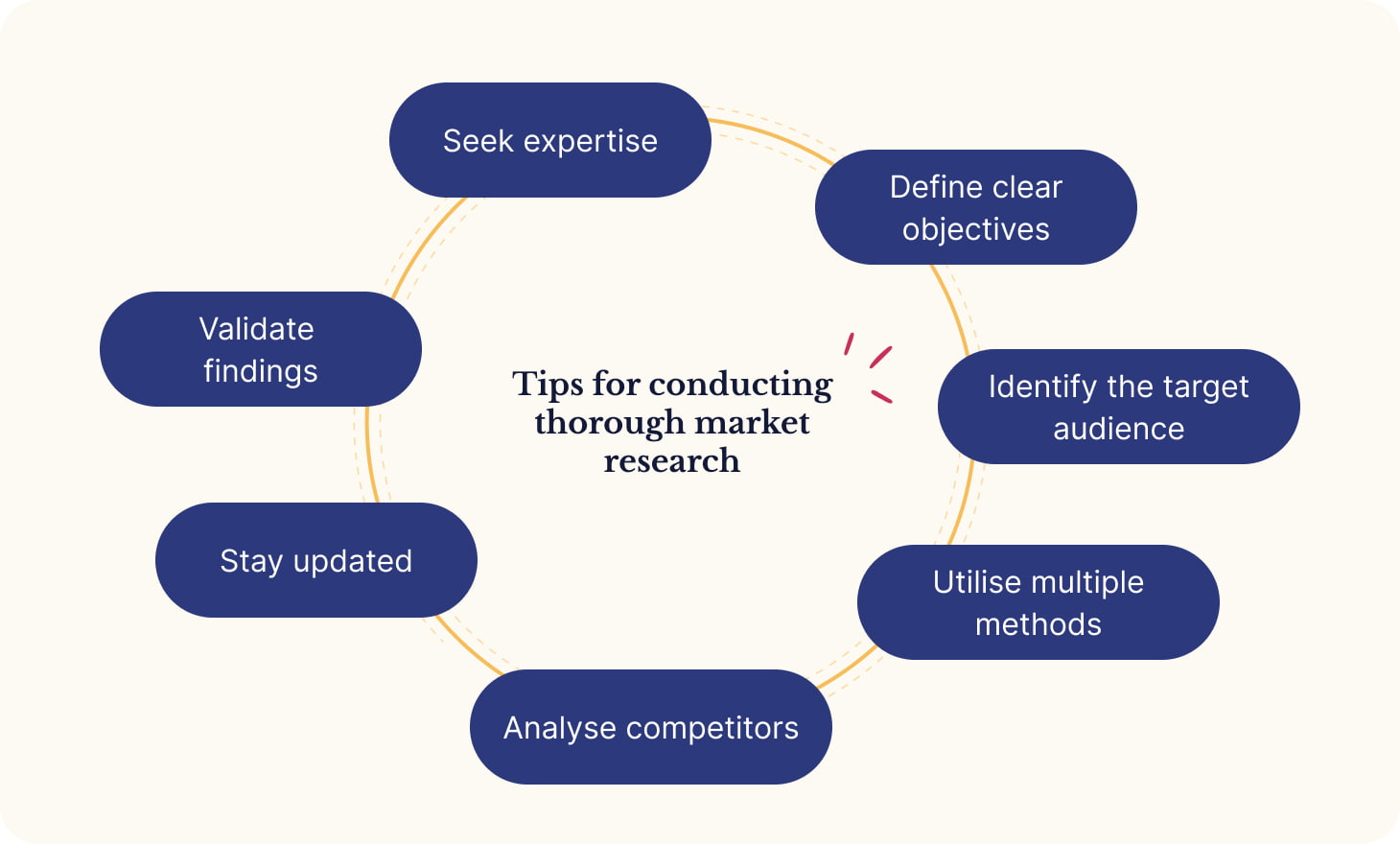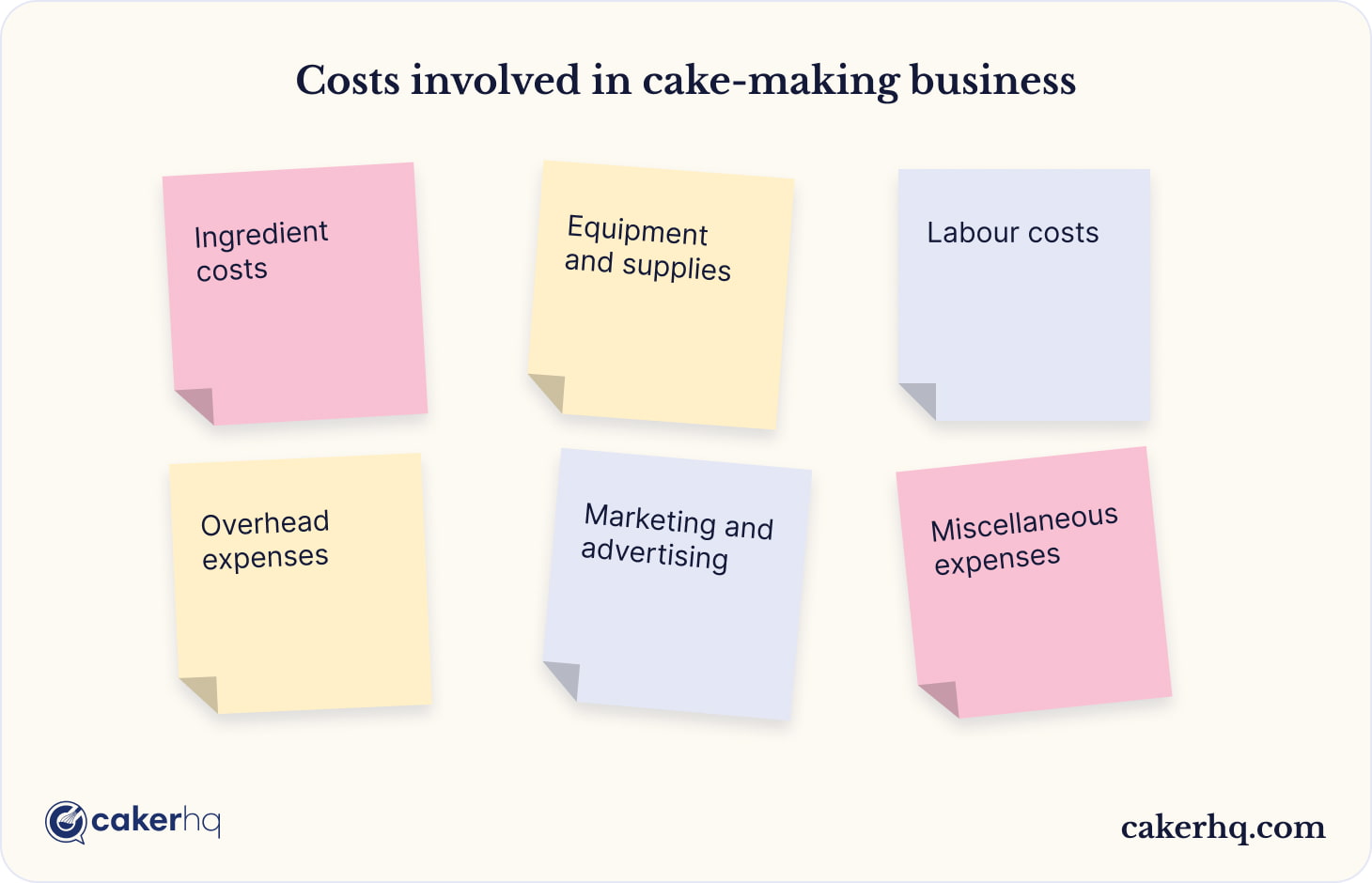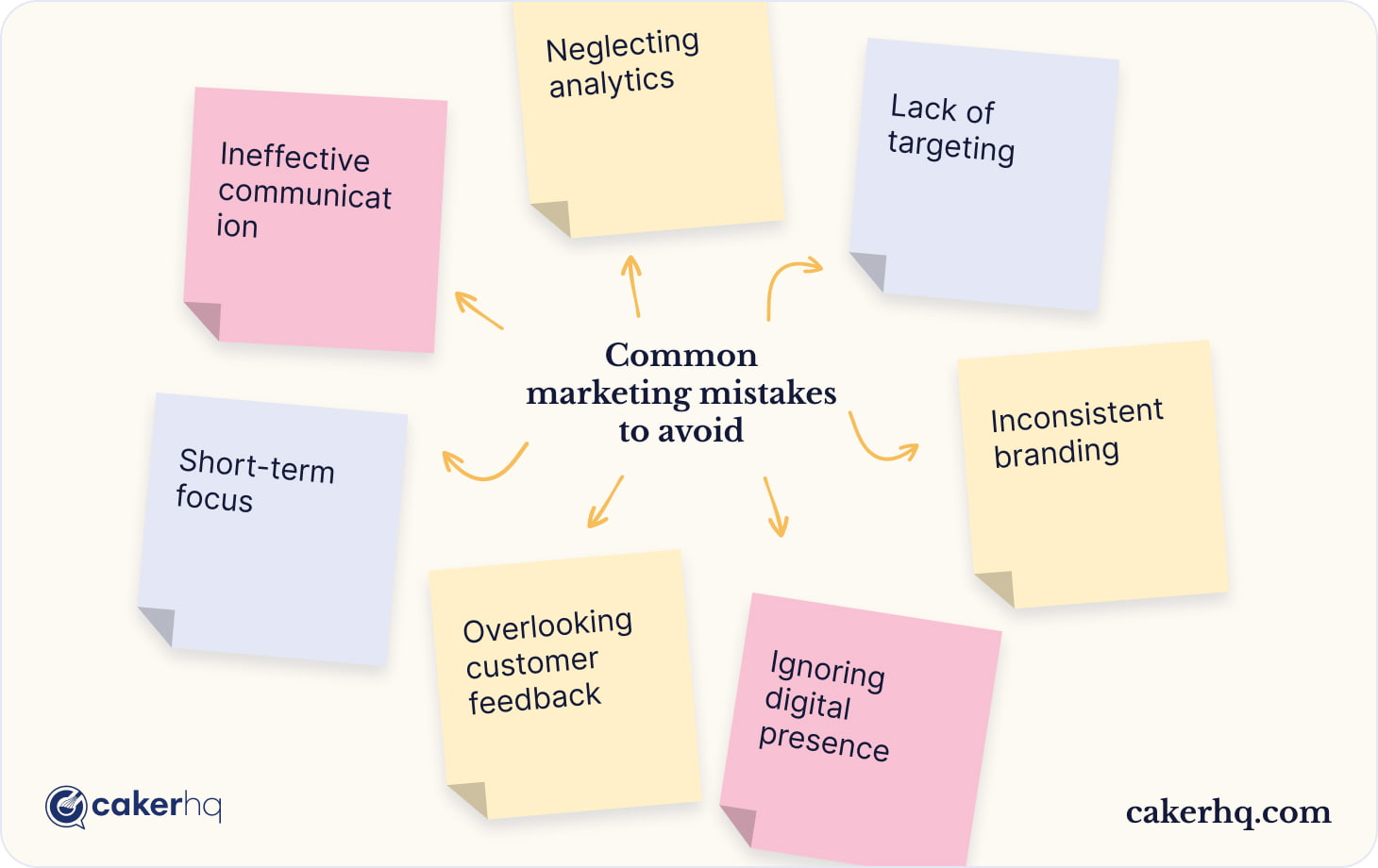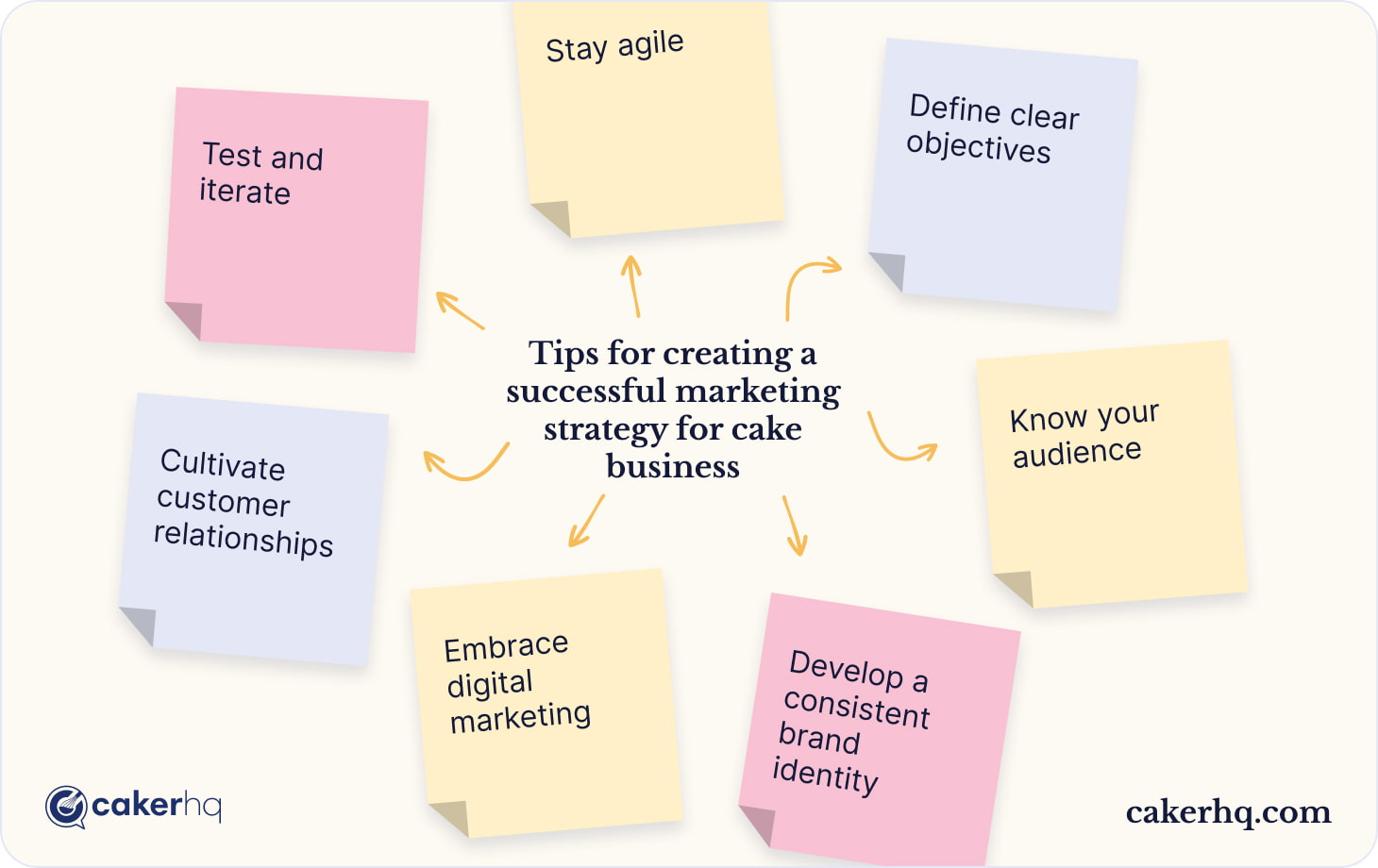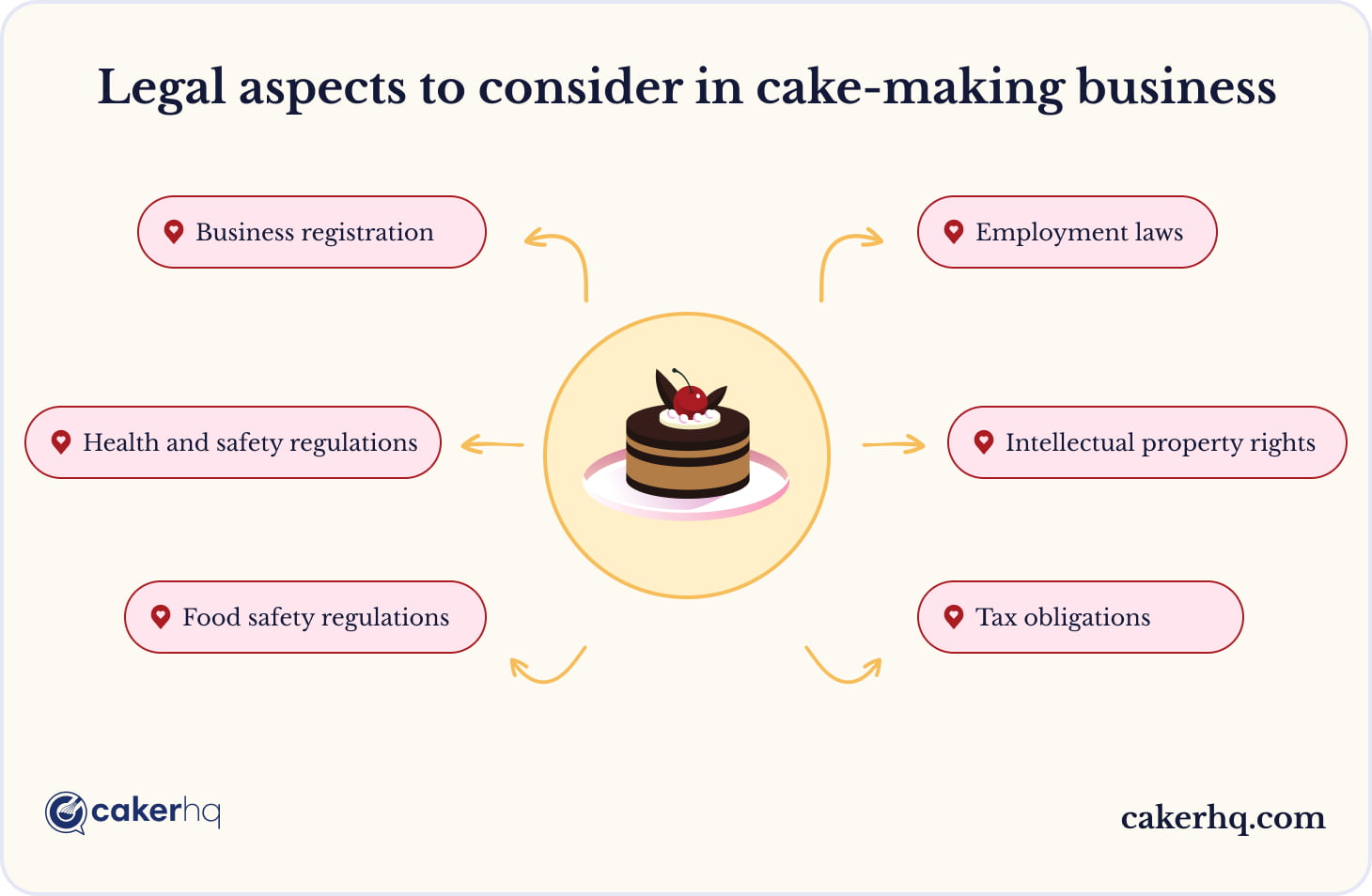Creating a business is always about dealing with dozens of issues that show up along the way. Building a cake-making business from scratch is the same, as it is riddled with things you should know beforehand.
Therefore, in this article, we will cover the biggest mistakes when opening a bakery, both home-based and as an establishment. With the help of this article, we sincerely hope you will manage to avoid the mistakes listed here and make your cake-making business adventure slightly easier. Let’s get started.
Lack of market research
First and foremost, you should know the game's rules before you start playing. In other words, investing money in creating a business people don’t need is one of the worst mistakes business owners make. Therefore, researching the market before starting a venture is a simple yet irreplaceable step toward success. But let’s provide more clarity. First, why is market research so important?
In general, there are several considerations.
First of all, market research serves as the foundation for informed decision-making in the cake-making business. It provides valuable insights into customer preferences, competitor analysis, and market trends, which later help form a healthy business that will stand out among competitors and cover all the pain points of the target audience.
Secondly, without market research, businesses operate blindly, investing money in trying new features and ideas that may have a high chance of failure. Therefore, without market research, you are risking poor product-market fit and wasted resources.
Lastly, market research is all about finding opportunities. It enables businesses to identify opportunities and anticipate challenges, fostering strategic growth and sustainability.
Think of the fast food industry as a clear example. It would be tough for fast food businesses to survive if they only offered McDonald’s standard kit because of the extreme competition. Thus, although such companies exist, hundreds of other fast-food brands have done market research and chosen their respective niches in the industry. Hence, KFC focused on chicken, Domino's focused on pizza, and Subway chose sandwiches and salads as their main dishes.
Now, imagine these scenarios, as they’re pretty common in numerous industries.
- You start offering a new, intricate cake flavour without conducting market research.
- You spend business money and time on buying ingredients, creating a flavour, and adding it to your bakes.
- The flavour, though innovative to the bakery, fails to resonate with the target market's taste preferences. Perhaps it’s too extraordinary, or it may be too sweet, you’ll never know for sure.
- Result: Your bakery incurs losses due to unsold inventory, not to mention wasted time and resources.
Although extremely simplified, this example is applicable to anything in your business: flavours, packaging, decorations, pricing, you name it.
Tips for conducting thorough market research
Now that we have covered a lot about market research, let’s stop on the most important aspect: how do you conduct it? As usual, there are a few tips:
- Define clear objectives. Determine what information is needed and how it will inform business decisions.
- Identify the target audience. Understand the demographics, psychographics, and preferences of the target market.
- Utilise multiple methods. Combine qualitative (surveys, focus groups) and quantitative (data analysis, surveys) research methods for comprehensive insights.
- Analyse competitors. Assess competitors' offerings, pricing strategies, and marketing tactics to identify gaps and opportunities.
- Stay updated. Continuously monitor market trends, consumer behavior, and industry developments to adapt strategies accordingly.
- Validate findings. Test assumptions and hypotheses through pilot studies or market experiments before full-scale implementation.
- Seek expertise. Consider consulting with market research professionals or leveraging online resources for guidance and support.
By prioritising market research and applying these tips, cake businesses can minimise risks, optimise resource allocation, and position themselves for long-term success in a competitive market.
Underestimating costs
Setting a viable pricing policy is another attention-worthy aspect when creating a cake-making business. Failure to do so can lead to dozens of issues businesses often struggle to fix. Therefore, never underestimate all the costs involved in running a successful cake-making venture. But what are all those costs?
- Ingredient costs. Expenses related to purchasing ingredients such as flour, sugar, eggs, and flavourings.
- Equipment and supplies. Costs associated with purchasing and maintaining baking equipment, utensils, packaging materials, and tools.
- Labour costs. Time is money, and you should clearly know how much you will spend per cake. Moreover, you will need to take this aspect one step further if you have employees involved.
- Overhead expenses. Fixed costs like rent (if applicable), utilities, insurance, and licenses required to operate the business.
- Marketing and advertising. Expenses for promoting the business through channels such as social media, print ads, and promotions.
- Miscellaneous expenses. Unexpected costs like repairs, emergency purchases, or seasonal fluctuations in demand.
Consequences of underestimating costs
Spoiler alert: there are a lot of them. When there is money involved, issues can grow endless.
For instance, insufficient budgeting might lead to cash flow problems, making it more difficult to cover expenses and invest in business growth. However, by regularly reviewing and adjusting budgets, businesses can maintain better financial control.
Cash flow issues might lead businesses to compromise on quality temporarily. Thus, cutting corners on costs can result in using lower-quality ingredients or equipment, compromising the quality of products and customer satisfaction. While this can affect customer satisfaction, it also presents an opportunity to innovate and find cost-effective solutions that maintain quality standards.
Furthermore, stunted growth is a possibility when financial resources are limited. This can delay expansion, product diversification, or marketing efforts. Yet, focusing on core strengths and gradual growth can build a solid foundation for future success.
On top of all, legal issues could arise from non-compliance with tax regulations or financial obligations, potentially resulting in penalties or fines. However, staying informed about legal requirements and seeking professional advice can mitigate these risks.
As you can see, problems caused by underestimating costs can be intertwined and can destroy a business very quickly. Yet, these challenges are manageable with careful planning and strategic adjustments. By staying vigilant and adaptable, businesses can navigate financial hurdles and continue to thrive. So, what steps can you take to improve cost estimation and ensure smooth business operations?
Managing expenses tips
- Conduct thorough cost analysis. Identify and quantify all expenses associated with the business, including both fixed and variable costs.
- Establish realistic budgets. Develop a detailed budget that allocates funds for each expense category and accounts for unexpected costs.
- Price products appropriately. Calculate prices based on accurate cost calculations, desired profit margins, and consideration of market demand and competition.
- Track and monitor expenses. Implement systems to track expenses regularly, review financial reports, and identify areas for cost-saving opportunities.
- Negotiate with suppliers. Explore options to negotiate favourable terms with suppliers, such as bulk discounts or extended payment terms, to reduce ingredient costs.
- Invest in efficiency. Implement processes and technology to improve operational efficiency and reduce waste, ultimately lowering overall costs.
- Plan for contingencies. Set aside funds for emergencies or unexpected expenses to mitigate financial risks and maintain business continuity.
By adopting these strategies, you can ensure financial stability, maintain product quality, and position your cake business for sustainable growth in the competitive market.
Poor marketing strategy
A huge part of making a business successful is letting people know about it. However, a poor marketing strategy can hinder your efforts. Thus, it is another quite common mistake businesses make.
Importance of effective marketing
There probably doesn’t even need to be an explanation of why marketing is important, as its importance is a fact. An effective marketing strategy brings lots of benefits to your business, including:
- Visibility and differentiation. In a crowded market, effective marketing and especially the content for cake business help it stand out and attract customers amidst competition.
- Brand awareness. Marketing efforts build brand recognition and recall, increasing the likelihood of customers choosing the business over competitors.
- Customer engagement. Marketing facilitates meaningful interactions with customers, fostering relationships and loyalty through personalised communication and experiences.
- Sales and revenue generation. Well-executed marketing campaigns drive sales by creating demand, promoting products, and enticing customers to make purchases.
- Long-term growth. Strategic marketing initiatives contribute to sustainable business growth by expanding the customer base, increasing market share, and strengthening brand equity.
Common marketing mistakes to avoid
If you think about it, marketing is a huge aspect that has many moving parts. Thus, let’s pour more sense into the ‘poor marketing strategy’ problem we’re covering here by outlining common marketing mistakes.
- Lack of targeting. Failing to identify and understand the target audience leads to ineffective marketing messages that fail to resonate with potential customers.
- Inconsistent branding. Incoherent brand identity across marketing channels confuses consumers and dilutes brand equity, undermining trust and recognition.
- Ignoring digital presence. Neglecting online platforms and digital marketing channels limits reach and overlooks opportunities to engage with tech-savvy consumers.
- Overlooking customer feedback. Disregarding customer opinions and preferences results in disconnected marketing strategies that fail to address customer needs and desires.
- Short-term focus. Prioritising immediate sales over long-term brand-building efforts neglects the importance of building sustained customer relationships and loyalty.
- Ineffective communication. Poorly crafted marketing messages lack clarity, relevance, or persuasiveness, failing to capture audience attention or motivate action.
- Neglecting analytics. Failure to track and analyse marketing performance prevents businesses from optimising strategies, identifying trends, and measuring return on investment (ROI).
Looking to grow your audience? The CakerHQ platform can help! Join us
Tips for creating a successful marketing strategy for cake business
Now that you know how important marketing is and which mistakes you should avoid, let’s see how to create an effective strategy.
Begin by defining clear objectives. These should be measurable goals aligned with your cake business plan. This way, you can start guiding marketing efforts effectively. Along with defining objectives, learn your audience if you still didn’t. Research their demographics, i.e. preferences, age, and other details. This way, you will be able to tailor your marketing campaign so that it feels natural to them.
Before publishing, sharing, and measuring, make sure you develop a consistent brand identity. This should include logo, colours, tone of voice and messaging. All these aspects should be unified for all platforms so that they directly associate with your business.
Once you do all the preparatory steps, you can start with digital marketing. Choose online platforms where your business will get more recognition and traction. This, for the most part, includes social media like Facebook and Instagram. Additionally, you can consider creating an email marketing campaign, so that people get regular updates on our bestsellers, discounts, and more.
With social media activity comes responsibility for engaging with customers. Foster meaningful customer connections through personalised communication, exceptional service, and loyalty programs. Therefore, consider organising polls, giveaways, and other activities to attract customers and retain their interest.
In the marketing world, it’s important to remember that there are dozens of ways to do things. Therefore, your strategy may not be as successful as you thought it would be. Hence, always remember to test and iterate on your ideas. Experiment with different marketing strategies, messages, and channels, and use analytics to measure performance and refine tactics for continuous improvement.
Ignoring customer feedback
In passionate businesses like cake-making, customers' feedback is one of the greatest sources of inspiration. Their feedback is invaluable when you’re growing your business, as their ideas and suggestions may lead to great improvements.
Moreover, listening to customer feedback demonstrates a commitment to meeting customer needs and preferences, fostering trust and loyalty. Speaking of pure value, feedback provides super helpful insights into the customer experience with your business. Which items they like and which not along with reasons why. Additionally, their feedback can help you see issues otherwise invisible to you as an owner.
Last but not least, perfect customer feedback handling is about growing reputation. Addressing customer concerns and resolving issues promptly helps preserve brand reputation and mitigate negative word-of-mouth publicity.
So, how do you do it with maximum efficiency?
Tips for collecting customer feedback
Frankly, it is quite simple to do. There are a few proven techniques both huge and small businesses use with the only difference in scale.
- Surveys and questionnaires. Design surveys to gather feedback on various aspects of the customer experience, such as product quality, service satisfaction, and overall experience. These can easily be created with Google Forms, SurveyMonkey or even social media polls.
- Online reviews and ratings. Platforms like Tripadvisor, Yelp, or Google Maps let users leave reviews about restaurants and cafes. Hence, if your cake-making business has a dedicated place, monitor and respond to online reviews and ratings. This way, you not only address issues but also let other viewers see that you’re a responsible business willing to talk with your customers.
- Social media listening. Once you establish social media accounts on major platforms, always monitor them for mentions, comments, and direct messages. It is a great way for people to express concerns, pose questions, and leave feedback.
- Customer service interactions. If your business has employees, train them to actively listen to customer feedback during interactions and to escalate issues for resolution as needed. If not, always make sure to do it yourself. Professionalism in this matter is highly appreciated.
- Data analysis. Always try to see trends, patterns, and common themes. For instance, if one person mentions poor packaging, it could be a one-time mistake or coincidence. If several people mention the same issue, it becomes a pattern you need to investigate and resolve. Perhaps the packaging itself isn’t sturdy enough or not adopted for smaller orders. The reasons can be endless…
Need a cake business website? Not really. Become a professional on CakerHQ!
Neglecting quality control
Quality is a cornerstone of bakery success rate. Delivering the same level of quality of cakes every single time is the thing that makes people return and order more. Therefore, quality is that one aspect that cannot be neglected.
Furthermore, we are talking not only about the quality of cakes but also about shipping, packaging, customer service, ingredients, and many more things! If you, for some reason, decide to economise on the quality your business delivers, consequences can vary.
For one, it is diminished trust. Poor quality products erode customer trust and confidence in the brand, leading to negative perceptions and reluctance to purchase. This leads to a damaged reputation, resulting in negative reviews, word-of-mouth criticism, and loss of credibility.
More importantly, poor quality decreases customer satisfaction, which is paramount when it comes to the food industry. With losses in satisfaction, you can also lose business opportunities, as negative word-of-mouth and online reviews deter prospective customers from trying the products, reducing sales and revenue potential.
Lastly, remember the long-run consequences. A damaged reputation due to poor quality control can have lasting effects on brand image, making it challenging to regain trust and loyalty over time.
Sounds utterly disappointing, doesn’t it? Let’s look at the brighter side.
Ways to ensure consistent quality
- Standardise recipes and all processes. Establish standardised recipes, procedures, and quality standards for all products to ensure consistency in taste, texture, and appearance. The same goes for packaging, shipping, and messaging. Make sure you use the same packaging for all goods. With messaging, you can reply with premade templates, use brand greetings, and more.
- Quality ingredients. Source high-quality ingredients from reputable suppliers to maintain product integrity and enhance flavour profiles.
- Skilled staff training. In case you have staff working with you, provide comprehensive training on proper baking techniques, food safety protocols, and quality assurance procedures.
- Regular equipment maintenance. Maintain baking equipment and machinery regularly to ensure optimal performance and consistency in product output.
- Strict quality checks. Implement rigorous quality control checks at various stages of production, including ingredient inspection, baking, decorating, and packaging.
Overlooking legal and regulatory requirements
Frankly, everyone knows legal and regulatory requirements are a very tedious part of starting any kind of business. For this reason, many ventures neglect it but pay a huge price afterward. Let’s overview this aspect so you can learn from others' mistakes instead of repeating them.
So, what are the legal aspects you should account for?
- Business registration. Depending on the jurisdiction of your country and/or state, you may need to register your business name, obtain corresponding permits, licenses, and tax identification numbers to operate legally.
- Food safety regulations. Compliance with food safety regulations is essential to ensure the safety and quality of products. This includes proper handling, storage, and labeling of ingredients, as well as adherence to sanitation and hygiene standards.
- Health and safety regulations. Cake businesses must comply with health and safety regulations, such as maintaining a clean and safe working environment, providing adequate ventilation, and implementing measures to prevent accidents and injuries.
- Intellectual property rights. Respect intellectual property rights by obtaining permission to use copyrighted designs or logos and avoiding infringement of trademarks or patents owned by others.
- Employment laws. Again, if your business has employees, adhere to employment laws regarding wages, working hours, employee rights, and workplace discrimination to ensure fair and lawful treatment of employees.
- Tax obligations. Understand and fulfill tax obligations, including income tax, GST, and payroll taxes, by keeping accurate financial records, filing tax returns timely, and remitting taxes owed to the appropriate authorities.
In today’s world, neglecting regulations can cost huge amounts of money and a lot of time to handle. For instance, non-compliance with regulations may result in fines, penalties, or legal action taken against the business by regulatory agencies or affected parties. Moreover, severe or repeated violations of regulations can lead to business closure, suspension of operations, or revocation of licenses and permits.
After all, such a scenario can cause huge damage to reputation, leading to financial losses and liability risks. So, how do you prevent this scenario from happening?
Steps to ensure compliance with legal and regulatory requirements
- Research and understand requirements. Thoroughly research and understand the legal and regulatory requirements applicable to the cake business at the local, state, and federal levels.
- Seek professional guidance. To ensure compliance, consult with legal experts, accountants, or industry professionals familiar with the cake industry's specific legal and regulatory requirements.
- Maintain accurate records. Keep detailed records of business registrations, permits, licenses, tax filings, employee documentation, and other compliance-related documents.
- Implement policies and procedures. Develop and implement policies and procedures to ensure compliance with relevant regulations, including food safety protocols, workplace safety measures, and employment practices.
- Stay updated. Regularly monitor changes in laws, regulations, and industry standards that may affect the cake business and adapt practices accordingly to remain compliant.
Bottom line
On a closing note, it is important to remember that the success of your cake-making business hinges not just on the sweetness of your bakes but also on the soundness of your strategies. Therefore, reflect on everything we covered today, as there are possible aspects you can improve in your operations.
After all, the challenges are real and multifaceted, plus you never know when to expect them. But once they arrive, make sure you are prepared to tackle them and save the day! If you’re looking for more ideas, guides, and tips, feel free to check out our blog. It has plenty of articles about all potential aspects of driving a cake business. However, if you already know how to do it, become a part of CakerHQ as a professional!
